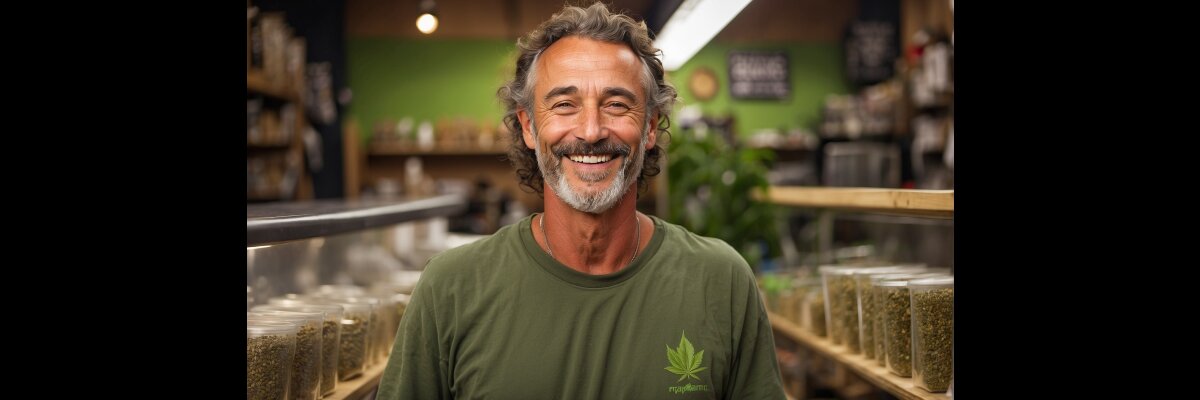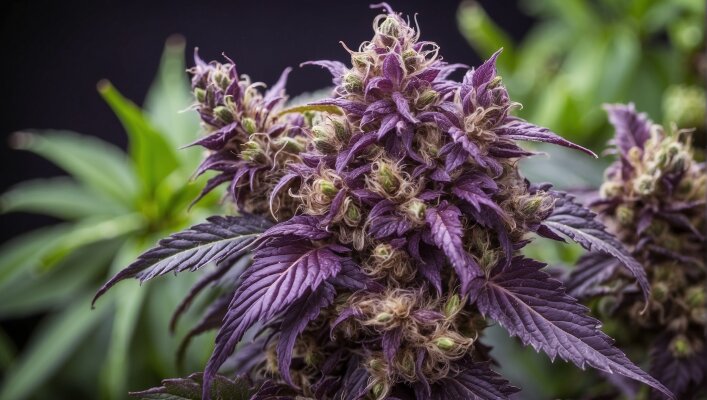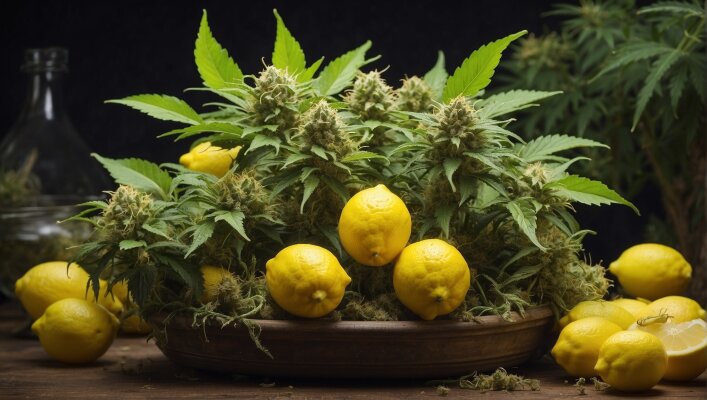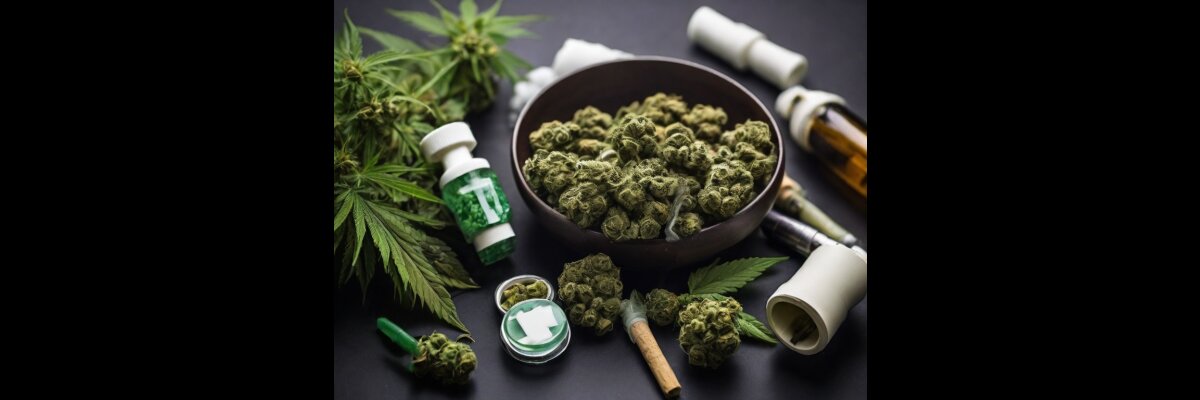The "Ampelkoalition" in Germany has decided to legalize or decriminalize the cultivation, possession and consumption of cannabis under certain circumstances. If everything goes according to plan, you will be able to legally grow and own up to three female cannabis plants in Germany from April 1st. The good news: This date allows both outdoor and indoor growers to harvest at least one more crop this year.
In order for you to fully benefit from the new regulation, you should be able to recognize the female hemp plant, as only she produces the sought-after THC and other active ingredients such as CBD and other terpenes. However, it is at least as important to recognize the male hemp plants in good time, as they not only take up valuable space, but can also pollinate your female plants, which breeders only rarely want.
Disclaimer: Currently (as of February 2024) the cultivation and possession of female cannabis is prohibited in Germany.

How do male and female hemp plants differ?
Hemp or cannabis users are usually only interested in the female plants and their product - often referred to as grass, marijuana or in pressed form as hashish - as only they promise the typical mind-altering or relaxing effects. Naturally, however, only about half of the seeds are female and the other half are male.
As a dioecious plant, hemp requires both male pollen and the female pistil to reproduce. When a female flower is pollinated by pollen from a male hemp plant, it begins to produce seeds. However, this costs the female plant a lot of energy that she cannot put into producing THC and the like. Fertilized flowers also bring a bitter taste to the harvest and should.
Growers are therefore regularly faced with the problem of sorting out the male plants before fertilization occurs. Another problem is the often limited cultivation space: growing male hemp plants, especially in indoor cultivation, requires a lot of space and electricity that would be better used by female plants.
The trick is therefore to identify and remove the male specimens as early as possible - or to rely on feminized seeds, where the breeder provides you with seeds that produce at least 99 percent female plants.
Signs of gender when growing
Hemp, cannabis or marijuana plants initially grow for a few weeks before entering the flowering phase. You will therefore only be able to tell whether the plants are male or female after the growth phase. In indoor cultivation, this often lasts around 4 weeks and is ended by switching to a lighting time of 12 hours. In outdoor cultivation in Germany, the days are only short enough to initiate natural flowering around the beginning of September.
Unfortunately, you have no chance of identifying the gender of your plants during the growth phase. This is only possible in the so-called pre-flowering period. Around the second or third day after switching to 12 by 12 lighting (or in outdoor cultivation, depending on the variety being grown and latitude: from the end of August or a few days to a few weeks after natural sunlight has fallen below 12 hours per day) The plants develop their first gender-specific characteristics.
In the male specimens, very thin sacs initially form, which over time fill with pollen and swell. Female plants, on the other hand, begin their flowering phase by producing light-colored hairs (the so-called pistils) at the junctions of the main stem and outgoing branches as well as in other branches (so-called internodes).
Recognize typical differences early
The female plants are particularly easy to recognize in the pre-flowering phase: In the first days of the flowering phase, female cannabis plants form their first pistils. These are the white hairs already mentioned, which appear particularly in the upper area of the plant in the branch forks between the trunk and side shoots. Plants that do not display this characteristic are suspected of being male and should be monitored closely to avoid unwanted pollination.
You can definitely recognize a male plant by its calyx or pollen sac. However, in the pre-flowering phase it is still very delicate and can easily be overlooked at the very beginning or even confused with the female pistils. If you let a few more days pass, the differences become very clear: What you initially think are green hairs on a female pistil grow into a closed pollen sack, while the female pistils multiply and become thicker or more robust and finally turn darker.
In indoor cultivation, you will be able to tell the sex of your plants with relative certainty just a few days after switching to 12:12 lighting, while the constant shortening of the hours of sunshine outdoors also leads to a slower development of the sexual characteristics of your plants. Accordingly, you have to observe them for a few days to a few weeks to be able to determine the gender for sure.
Pollination is usually not possible in this phase, so you can safely wait until the pre-flowering period before you have to separate female and male specimens from each other to prevent fertilization.

Initiate pre-flowering artificially?
For all cannabis breeders who rely on regular seeds but do not want to produce their own seeds, it is important to sort out the male plants as early as possible. Long before the danger of pollination of the female plants, the male specimens use up space and nutrients and compete with the females for the best light spots.
The often limited space in the grow cabinet, greenhouse or on the balcony is the main reason for sorting out the male plants early. If you wait until the regular pre-flowering, you have to worry about the unwanted males for several weeks (outdoors even several months) and usually waste growth potential in the female marijuana plants.
Many growers therefore prefer to induce pre-flowering artificially in order to identify and sort out the males and then send the female cannabis plants back into the growth phase.
When growing indoors, all you need to do is change the lighting to 12 hours of brightness and 12 hours of darkness for a few days. In outdoor cultivation, however, an artificial night with 12 hours of darkness must be created. This is actually only possible outside in greenhouses or by very carefully hanging them with opaque film or something similar.
However, there is a simpler solution here too: you can simply bring your plants into the apartment at night and leave them in a dark place until you bring them back into the garden or onto the balcony the next day (after at least 12 hours of darkness).
Before you start pre-flowering, your plants should have reached a certain size and therefore robustness. Experienced growers recommend waiting until the fourth pair of leaves have grown and the plant is around 15 to 30 cm high. After the pre-flowering has appeared, you can sort out the males and send the remaining females back into the growth phase by simply extending the light phase to more than 12 hours until they have reached the desired size. An artificial pre-flowering is widely considered to be harmless to the further development of your plants.
Is it legal to grow male hemp?
The private cultivation of cannabis is currently prohibited in Germany. This applies to male plants as well as females. However, on April 1, 2024, the federal government plans to decriminalize the possession and cultivation of up to three female plants. Male plants are unlikely to play a role in this calculation and will then be able to be legally bred indefinitely - as long as all the requirements of the then valid cannabis legislation are adhered to.
What can you do with the male cannabis plant?
Male cannabis plants and industrial hemp produce very few psychoactive substances (THC, CBD and other terpenes) and are therefore of little interest to cannabis consumers. However, the male hemp plant is ideal for industrial processing due to its softer fibers. The fast-growing industrial hemp is primarily used to make fabrics and other textiles. Hobby growers can also use the male cannabis plant to produce healthy foods such as juice.
What does a hemp plant that is ready to harvest look like?
The best way to recognize a hemp plant that is ready to harvest is by the cloudiness of the trichomes, which grow as hairs on the flowers. If around 10 percent to a third of the hairs are amber and only a few trichomes are clear, you have found the optimal harvest time. However, to examine the delicate hairs you will need at least a magnifying glass, but better a microscope.
As further clues you can
• the breeder's information on the duration of the flowering phase,
• a swelling of the calyxes, which therefore appear denser,
• an increasingly intense smell as well
• decreasing water consumption
serve. Begin observing these signs as soon as the plant begins to turn fall color and shed its large fan leaves or shade sails.

What does a pollinated cannabis plant look like?
When the female hemp plant is pollinated by male pollen, it begins producing seeds for reproduction. This process costs you a lot of energy and significantly reduces the production of THC etc. It is not easy to tell whether your cannabis plant has been pollinated.
You need to look very closely at the blooming buds. They consist of several calyxes that are completely or partially covered by so-called bracts and thus protected. If these bracts swell, this is a clear indication of pollination. In this case, grab these cover leaves with tweezers and pull them apart: If there are seeds inside, your cannabis plant has been fertilized and in most cases should be harvested immediately if it can be saved at all.
Another sign is a dark discoloration of the pistils (see above). As the flowering phase progresses, the color of unpollinated plants becomes increasingly darker and often becomes purple, orange or red. In the case of a pollinated flower, however, the pistil only turns dark (brown-blackish) in the upper part and the 'stem' remains white or light.
FAQ
Some frequently asked questions are briefly answered below.
How many cannabis plants can you own in Germany?
Cannabis is currently not allowed to be cultivated privately in Germany - but that is expected to change on April 1, 2024.
What happens if a flower isn't pollinated?
This is the desired progression if cannabis is grown for consumption purposes. The flowers of the female cannabis plant are not pollinated and therefore continue to grow and produce high amounts of THC, CBD and other potent terpenes.
Conclusion
We hope our guide was able to help you identify male plants in time before they could pollinate the female plants. Female cannabis plants that have been pollinated begin to produce seeds and subsequently produce only a small amount of THC etc. If fertilization occurs early in flowering, it can ruin your entire harvest. However, fertilization shortly before harvest can be accepted because the desired active ingredients have already been produced.
















